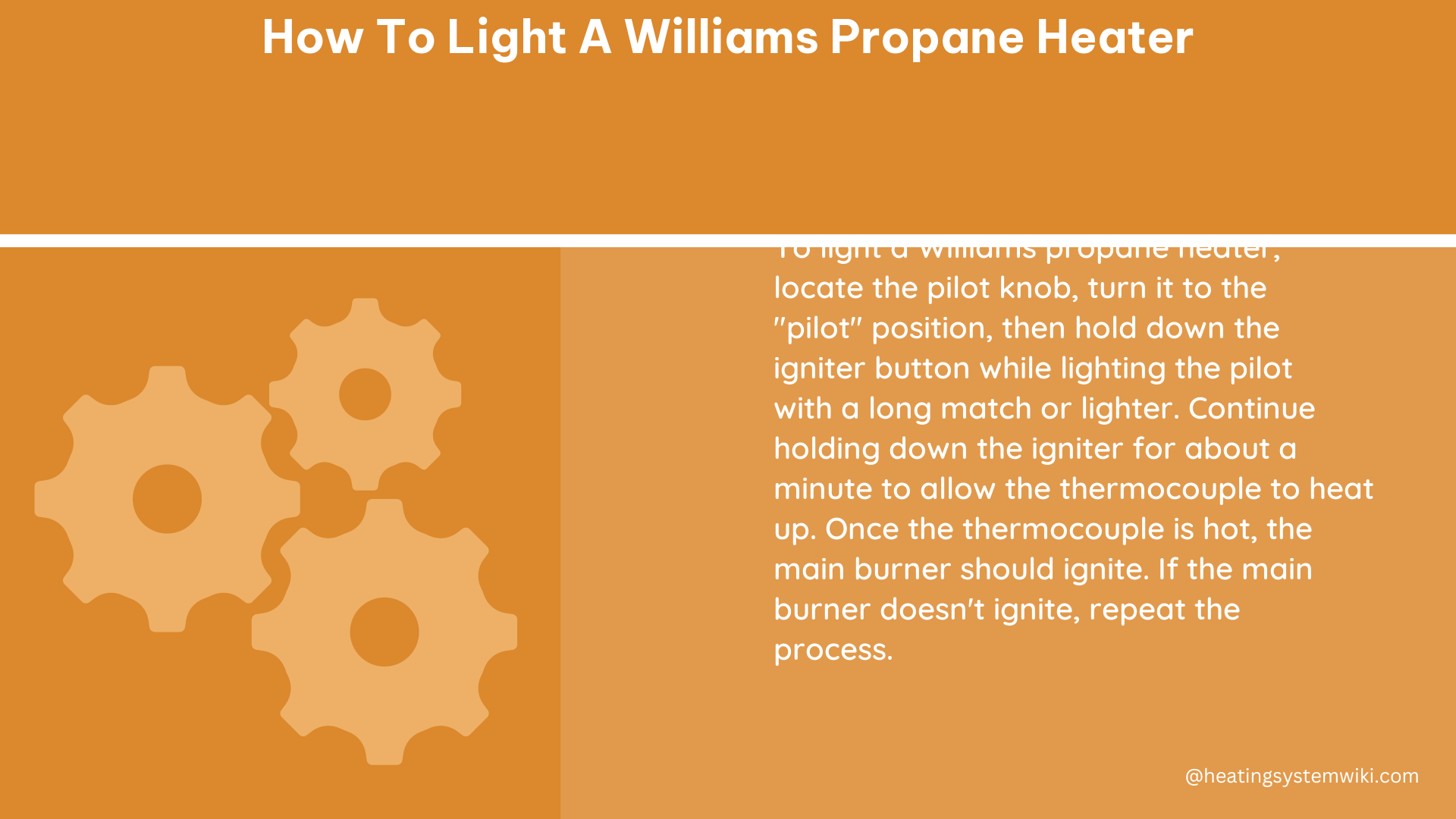Lighting a Williams propane heater can be a straightforward process, but it’s essential to follow the proper safety precautions and understand the technical specifications to ensure a successful and safe operation. This comprehensive guide will walk you through the step-by-step process of lighting a Williams propane heater, providing you with the necessary information to get your heating system up and running efficiently.
Preparing the Heater for Ignition
Before attempting to light the heater, it’s crucial to ensure that the gas supply is turned on and that there are no gas leaks in the system. You can check for gas leaks by using a gas leak detector or by simply sniffing around the heater for the distinct odor of propane.
Once you’ve confirmed that the gas supply is secure, locate the gas control knob on the heater and turn it to the “pilot” position. This will allow you to access the pilot light and ignite it.
Igniting the Pilot Light

-
Locate the Pilot Light: The pilot light is typically located near the base of the heater, often behind a small access panel or cover.
-
Press and Hold the Pilot Knob: With the gas control knob in the “pilot” position, press and hold the pilot knob. This will allow gas to flow to the pilot light.
-
Light the Pilot Light: While holding the pilot knob, use a long match or a barbecue lighter to ignite the pilot light. The pilot light should be a small, blue flame.
-
Continue Holding the Knob: Continue holding the pilot knob for 30 seconds to 1 minute after the pilot light is lit. This allows the thermocouple to heat up and establish a steady flame.
-
Adjust the Pilot Light Flame: Observe the pilot light flame and adjust it as needed to ensure it is approximately 1-2 inches high and burning with a steady, blue color.
Turning On the Heater
-
Release the Pilot Knob: Once the thermocouple has had sufficient time to heat up, you can release the pilot knob. The pilot light should remain lit.
-
Turn the Gas Control Knob: Rotate the gas control knob from the “pilot” position to the desired heat setting. This will allow the main burner to ignite, providing the desired amount of heat.
-
Observe the Main Burner: Ensure that the main burner ignites and is burning with a steady, blue flame. Adjust the gas control knob as needed to achieve the desired heat output.
Technical Specifications
- Pilot Light Flame: The pilot light should be a steady, blue flame approximately 1-2 inches high.
- Thermocouple Heating Time: The thermocouple should be allowed to heat up for 30 seconds to 1 minute after the pilot light is lit.
- Gas Control Knob Position: The gas control knob should be in the “pilot” position before igniting the pilot light.
Troubleshooting Tips
-
Gas Supply Issues: If you have trouble lighting the pilot light, ensure that the gas supply is turned on and that there are no obstructions in the gas line.
-
Pilot Light Going Out: If the pilot light goes out, repeat the lighting process. If the pilot light continues to go out, there may be an issue with the thermocouple or the gas supply. In this case, it’s best to contact a professional for assistance.
-
Flame Adjustment: Ensure that the pilot light and main burner flames are burning with a steady, blue color. Adjust the gas control knob as needed to achieve the desired heat output.
By following these step-by-step instructions and adhering to the technical specifications, you can safely and effectively light your Williams propane heater. Remember to always prioritize safety and, if you encounter any issues, don’t hesitate to seek the help of a qualified technician.
